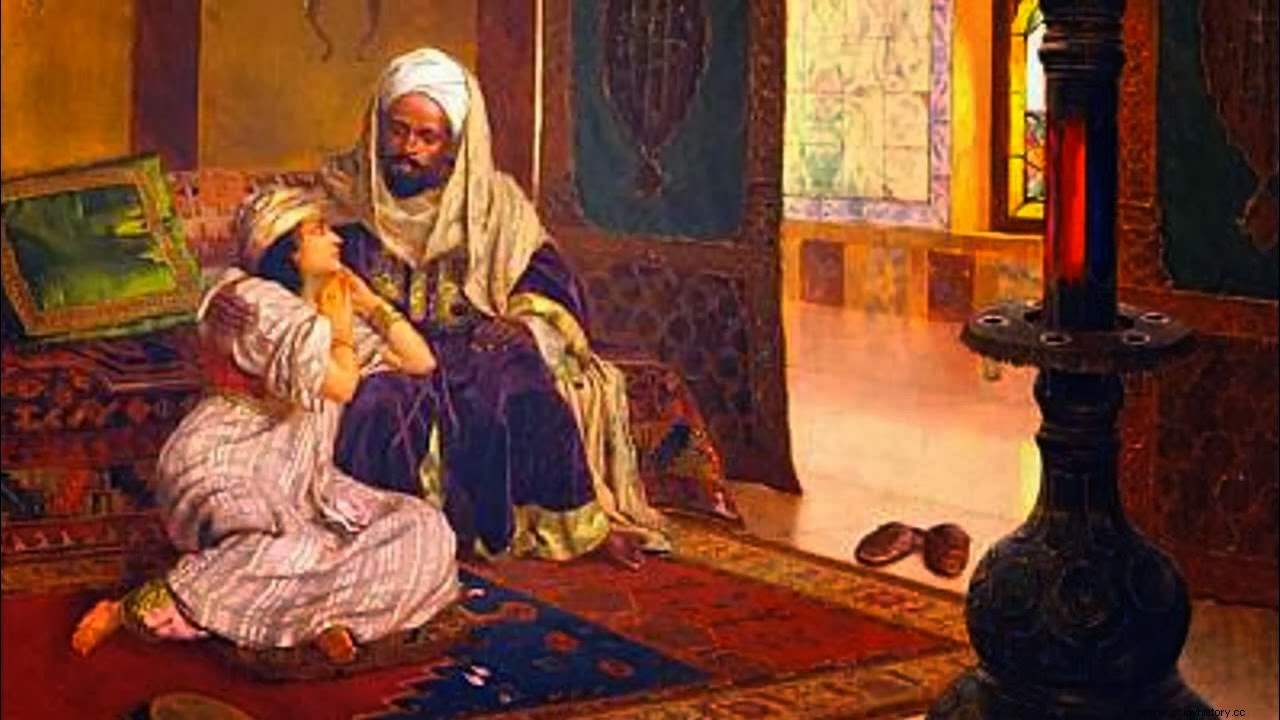First of all, I would like to specify that the term moro comes from the Latin maurus, the name of the inhabitants of the Roman province of Mauritania orMauretania , an area of North Africa that corresponded to the Mediterranean coast of what is now Morocco and that has nothing to do with the current country of Mauritania. As we all know, the waves that crossed the Strait of Gibraltar and reached the Iberian Peninsula in 711 were almost entirely Berbers recently Islamized from this area - Arabs, what is said Arabs, scarce. By extension, the term Moro It ended up being used to name the one who professed the Islamic religion and the Muslim who lived in Spain from the 8th to the 15th century.
That said, the answer to the title is much closer to no than yes . I don't dare say a (resounding) NO because almost eight centuries go a long way, but we can say that his genetic and physiognomic legacy is minimal compared to that of others.

And now we get down to business...
Islamic law allowed Moors to "be carnally related » with Christian women (emirs, caliphs and kinglets had Christian women as concubines and favourites), but the Moors could not do so with Christians, under penalty of death. Therefore, the only possible case of miscegenation in al-Andalus was that of a Muslim father and a Christian mother and, logically, his children were educated in Islam. Later, during the so-called Reconquest, the Christian kingdoms of the north gradually emptied the peninsula of Muslim population as they gained territory. After the capture of Granada in 1492 by the Catholic Monarchs, the Jews were expelled and in 1502 the decree of forced conversion was proclaimed (forcing Muslims to convert or leave the peninsula), seeking religious unification. The Moors , as the Muslims who converted to Christianity and stayed were called, would at this time be the only remnant of miscegenation, but most of them continued to keep their customs, language and even religion private. In 1570, Philip II sent his half-brother John of Austria to the Alpujarras to put down a Moorish rebellion. After years helping Barbary and Turkish pirates, Philip III ordered the definitive expulsion of the Moors in 1609. Thus, the Moorish "blood" that remained in ancient al-Andalus was minimal.
So, where does the current population of Andalusia come from?
Well, simply, from the Christians who repopulated the south:Leonese, Castilian, Galician, Aragonese... And to make it clearer, in the words of teachers:
- You, Andalusian friends, will be able to enjoy the political autonomy that you now desire. Because you are the grandchildren of the Christian conquerors, you will be able to live autonomously within Spain. Claudio Sánchez Albornoz (historian and minister of the Second Republic)
- The illusion that the Andalusians descend from the Moors is only sustained in the fantasy of some pseudo-historians and certain converts to Islam who repudiate their first names Sebastián, José, Paquita, for Abderramán, Mohamed or Aixa ». Juan Eslava Galán (writer and winner of the Planeta Prize)
- But behind the warrior brilliance, the more or less well-founded praises, the economic interest invariably appears. It is of interest that the Muslims remain – like the Christians before – for a basic economic motivation, at least while the new lands are not repopulated with enough northerners, a process that began in the mid-13th century in the Guadalquivir valley and culminated in the Alpujarras in 1570. The subject population (Mudejar), in constant demographic and economic decline, survives for a time in rural areas and to a lesser extent dedicated to construction, domestic service and small craft industries. Emigration to North Africa and the kingdom of Granada, spurred on both by the alfaquíes, who could not bear the idea of miscegenation, and by the conquerors, depopulated the Moorish settlements, so that in the times of Alfonso XI they had passed for the better. Those of Niebla, Carinona, Jerez, Moguer and Constantina, and those of Écija and Seville were severely reduced. All this in parallel to a massive influx of northerners that deep and radically Castilianizes the center and west of current Andalusia, making this undeniable historical reality illusory and of a delusional folklorism the present claims of those who very seriously claim "descending from the Moors ». The excellent studies of Professor Manuel González Jiménez exempt us from repeating here well-assessed and proven facts in the existing documentation. We know that on the death of Ferdinand II, with the kingdoms of Jaén and Córdoba already repopulated, by the Wise King – currently canonized as the great protector of the Moors and Jews – he concentrated his efforts on large or medium-sized towns and on the defensive axis around the border with Grenada. But not only Galicians, Asturians or Leonese flock there, 100 Catalan crossbowmen settle in Camas and the urban toponymy of Seville enlivens our memory with the name of its old streets. The results presented by R. Arié in the east of the peninsula are very similar in Valencia, the Balearic Islands and Aragón, although the Aragonese repopulation in the east was slower and, for economic reasons, an attempt was made to stop, at least at first, the outflow of of Mudejar work. Seraph Fanjul (Professor of Arabic Literature at the Autonomous University of Madrid).
What do you think?
